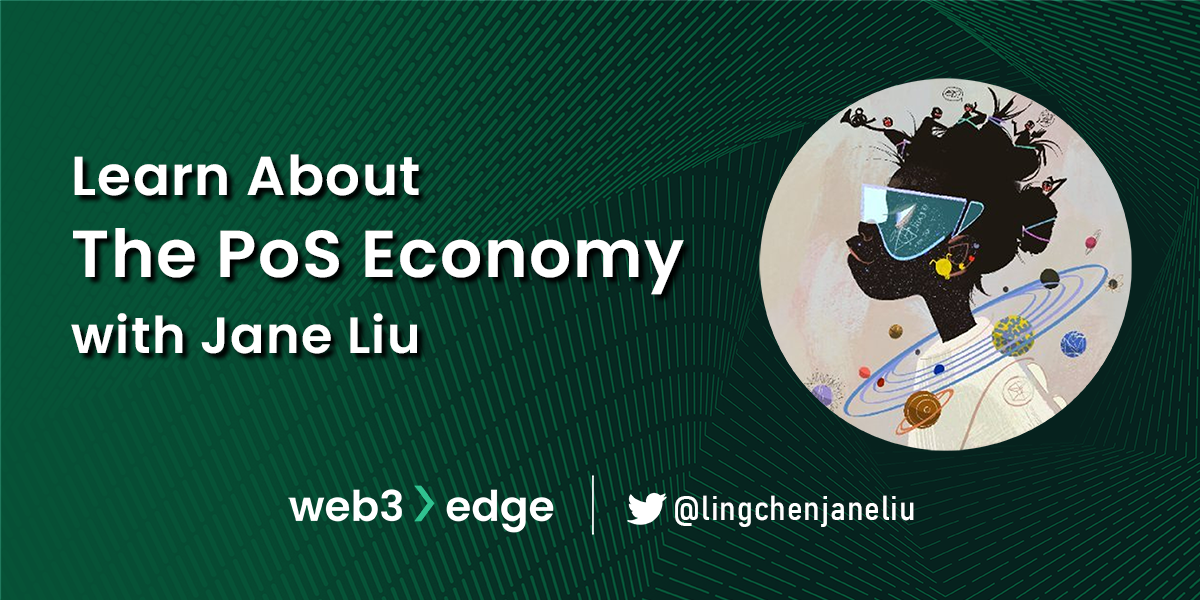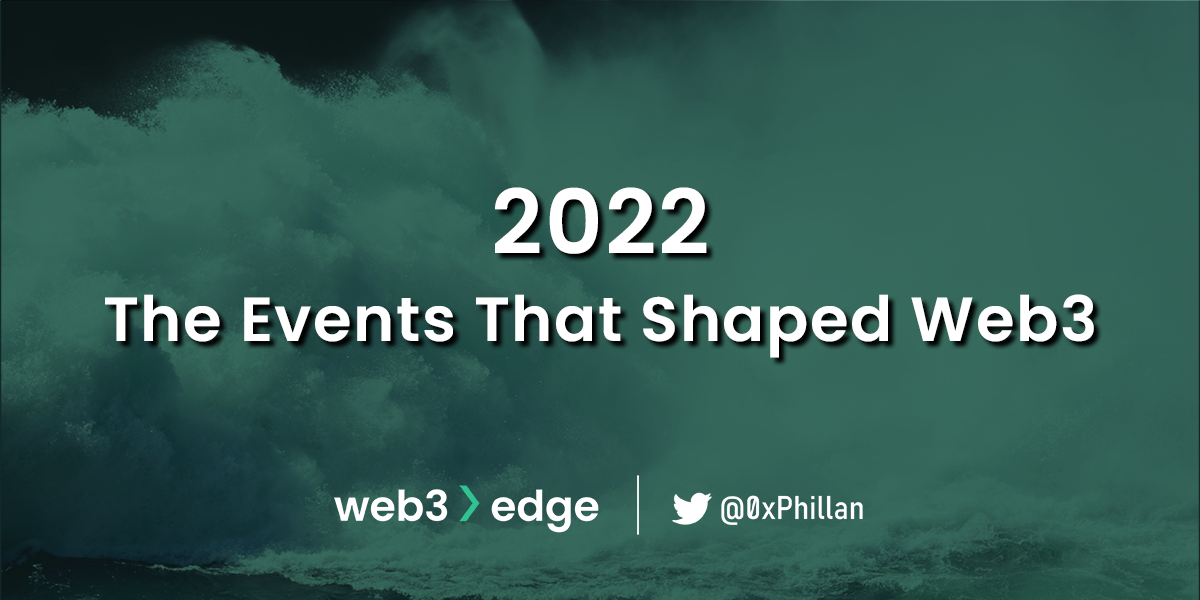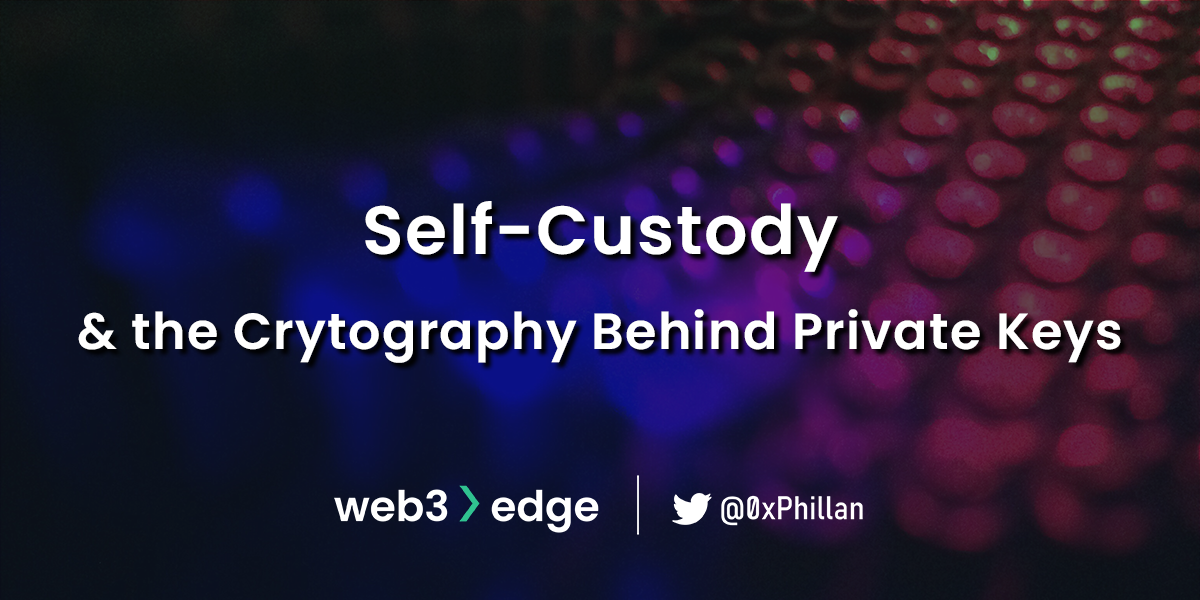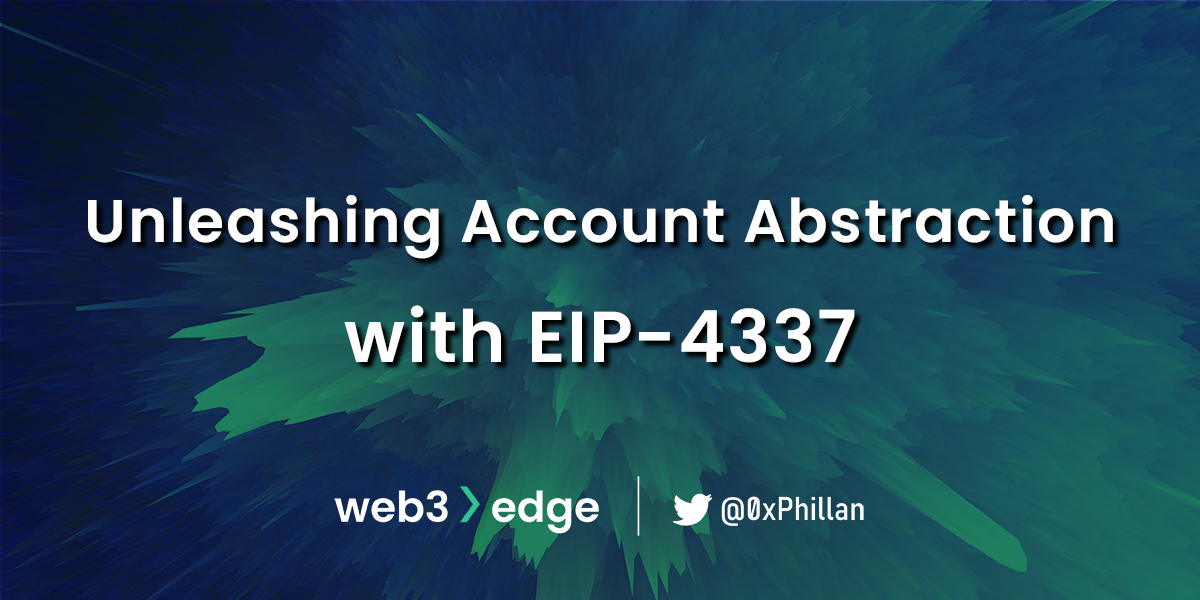18/10/22
(Mis)understanding the Metaverse
Category
Written by
Read time
7 min
Hello World!
This week we are taking a look at the metaverse, it’s history and what the concept means when you strip away hype around 3D virtual worlds and VR glasses. This time, our Web3edge original is a thought piece reflecting 0xPhillan’s recent thinking on the metaverse.
In our news highlights section we take a brief look at yesterday’s Aptos launch, as well as a lawsuit in regards to Tornado Cash filed by Coin Center against the U.S. Treasury Department, and finally an investigation launched by Texas Authorities against Sam Bankman-Fried and FTX.
Web3edge Originals
(Mis)understanding the Metaverse – A Thought Piece
Metaverse Concept and History
The term “metaverse” was invented by American author Neal Stephenson in his science fiction novel titled Snow Crash, published in 1992. In his book, the metaverse is a black spherical planet with one road that spans across the entire 2^16km circumference of the sphere. Real estate in this digital world is owned and sold through a fictional organization, and people can purchase that real estate to build structures atop of it. To access this metaverse, users must use proprietary virtual reality goggles and access a global fiber-optic network, which resembles today’s internet. Neal Stephanson called this 3D virtual reality world the “metaverse”.
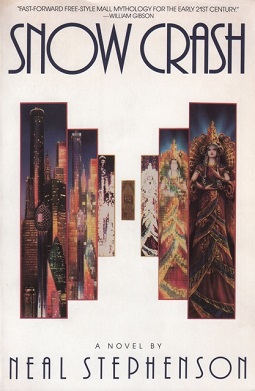
Mixing the virtual with the physical has been pop culture trope in American television and media dating all the way back to the Back to the Future movie trilogy. In the second iteration of the blockbuster movie series released in 1989, young Marty McFly is seen wearing goggles that appear to let him interact with people who are not even in the room with him.

The idea of seeing a different world through proprietary hardware was not only a film trope, but also part of reality, when Nintendo released the first ever portable virtual reality gaming device, named the Virtual Boy in 1995. If we keep following the history of virtual reality, we eventually get to video games such as Second Life (2003) that created a virtual world for people to socialize and live in (which the creator Philip Rosedale admits was inspired by Snow Crash) and the development of consumer VR goggles, namely the Ocolus Rift (2012).
At this point, we had the technology to build virtual worlds as well as the hardware to transport our video and audio senses into these worlds, but the term “metaverse” only gained mainstream traction in late October 2021, when Facebook announced the rebranding to “Meta” and formalized their focus on the metaverse.
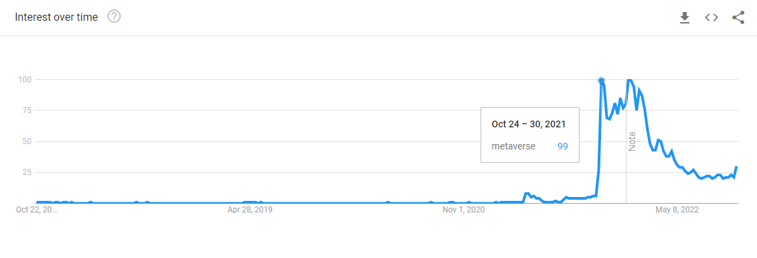
But with all the progress made, there was still one challenge: in Neal Stephenson’s book, people could own real estate, work and earn a living in the metaverse – people could actually live in it: the protagonist of Snow Crash is named Hiro, who is a pizza delivery driver and hacker in that very metaverse. Interactions like any other interaction in real life were possible in this world too, with value being traded between residents of this metaverse (time value of work for money, in the case of delivering pizzas).
It was not possible to prove unique individual ownership of digital assets, until Bitcoin came along and, with the invention of blockchain technology, made even that possible. Now that we have the virtual worlds, the technology to access them, and the decentralized networks that track value across these worlds, we are a step closer to reaching the original metaverse concept.
(Mis)understanding the Metaverse
At this point I would like to take a step back and ask you, the reader, this:
What is the end goal of the metaverse?
When you think of Meta, Sandbox or Decentraland, the idea of a metaverse may be a fictional universe where users are empowered to be who they cannot be, do what they cannot do, and experience what they cannot experience in the real world.
If we strip this concept of all its flashy parts that drive the marketing hype machine, specifically the “virtual reality” and “VR goggles” aspects, we get something far more interesting.
A system that allows us to interact with digital things the same way we do with physical things
In the physical world, if you have a football you can play any game with that football: you could play a match of football, you could kick it around or you could gift it to a friend, for example. The point is that you decide your interaction with the objects around you. There are no limitations in how you want to use the ball, and you can expect a certain level of privacy doing so.
In most virtual worlds today, interactions with digital objects are limited and carefully controlled. If you own a digital ball in one world, it’s highly unlikely you will be able to use that ball in another. Companies tend to build walled gardens, so that they can maintain control and ownership over all interactions within it. While this creates tailored experiences, once these virtual worlds are retired, everything that users built disappears in an instant. Imagine that ball you’ve played with all your life disappearing out of your closet, because the ball manufacturer decided it’s time to release a new ball.
Shouldn’t we be able to use and own digital assets in a similar way to physical assets?
Unlocking those capabilities is what I call true interoperability and what I believe the purpose of a metaverse should be. The virtual worlds that attempt to look real, the proprietary hardware to access these worlds – these are marketing hype for which interest will come and go as those technologies develop. However, the ability to interact within a digital system with the same freedom of will that we have in the physical world is what will drive adoption of these metaverses.
With Web3 technology and the open source movement, we are moving towards new systems that will form the foundation of a truly interoperable and flexible digital economy that mirrors the physical world.
And in a somewhat ironic twist, Neal Stephenson, the author of Snow Crash, is working on his very own Layer1 blockchain called Lamina1, which sets out to achieve these goals.
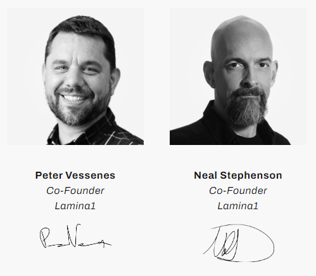
The Metaverse represents the evolution of our lives online –– graduation to rich 2D and 3D worlds in which we fluidly create, explore, socialize and transact. As we usher in this bold new era of content creation and participation, we must revisit the centralized business models of Web2 to empower creators and consumers with greater agency, ownership and privacy. A creative community that is free to innovate and transact will give rise to a thriving economy. – Lamina1 Whitepaper
Web3 News
Aptos off to a rocky start, US Treasury sued over Tornado Cash Sanctions and FTX under investigation
Aptos launched it’s much-awaited mainnet on October 17th. Shortly after the mainnet launch, Twitter user @ParadigmEng420 had some observations to share: the user could not connect with any nodes to submit transactions and actual transfers per second (TPS) hovered around 4, which is a far cry form the 100k theoretical TPS. While the first issue does, to some extent, explain the second issue (users cannot submit transactions, hence transactions are low), the Aptos team ended up locking their Discord, which led to even more questions from the community.
- ‘Solana Killer’ Aptos Launches Its Highly Anticipated Mainnet
- Twitter user @ParadigmEng420 calls out Aptos on Mainnet Launch abnormalities
Crypto advocacy group Coin Center filed a lawsuit against the U.S. Treasury Department for overstepping its legal authority by sanctioning Tornado Cash. Coin Center allege that the sanctions ban users from expressive advocacy. Furthermore, Coin Center itself is also affected by the banning, as many donations they received were through Tornado Cash, which helped preserve the privacy of their doners.
The Texas State Securities Board believes that unregistered securities were offered to US residents: “FTX US…may be offering unregistered securities in the form of yield-bearing accounts to residents of the United States,” was written in a state filing. “These products appear similar to the yield-bearing depository accounts offered by Voyager Digital LTD et al., and the Enforcement Division is now investigating FTX Trading, FTX US, and their principals, including Sam Bankman-Fried.”
This investigation may put a hold on Sam Bankman-Fried’s intention to purchase Voyager Digital LTD
- Texas State Securities Board Investigates FTX US, Sam Bankman-Fried
- Texas State Securities Board, Department of Banking, and Attorney General File Objection Against FTX Buying Voyager Digital
Other highlights of the week:
- Walmart CTO says crypto will become a ‘major’ payments disruptor
- Vitalik Buterin jokes about creating “THE protocol”, meanwhile $THE token is created achieving a market cap of $18.7m in a few hours
- Fed Vice Chair urges banks to deal cautiously with crypto firms
Knowledge Hub
Additional content to grow your edge
Technology
- Direct Acyclic Graph (DAG) Based Consensus Protocols: An Introduction | a16z crypto research talks – by a16z
- Wallet Security: The ‘Non-Custodial’ Fallacy – by Nassim Eddequiouaq and Riyaz Faizullabhoy
- Privacy on the Blockchain & Zero-Knowledge Proofs by Horizen.io
- Joseph Delong’s Guide to Developer Success in Web3 – by @josephdelong
Economy & Finance
- The end of 2% inflation and what is means for crypto – by @CumberlandSays
- On “Is Money Just A Game”? – by @punk6529
Design Thinking
- Virtual Society, Blockchains, and The Metaverse – by Elena Burger
____________
Today’s newsletter was written by @0xPhillan for Web3edge.io. Follow @Web3edge_io on Twitter!
This newsletter is not financial advice, I am not a financial advisor. The information provided by Web3edge is for general informational and educational purposes only. Do your own research before investing. See Disclaimers for more information.
Was this email forwarded to you? Sign up here.
SHARE THIS PIECE
Related content
Hello world! We are excited to announce the first guest piece published on Web3edge, by none other than the talented @lingchenjaneliu! In her piece she ...
Hello World! It's always good to reflect on where we came from, where we are and where we are going. With 2022 having come to ...
Web3edge Originals Hello World! The last few weeks the news cycle has been dominated with the collapse of the FTX exchange, FTX US exchange and Alameda ...
Hello World! You may have seen Vitalik Buterin, founder of Ethereum, tweeting about EIP-4337 and what it means for the Ethereum network. In this week’s ...
